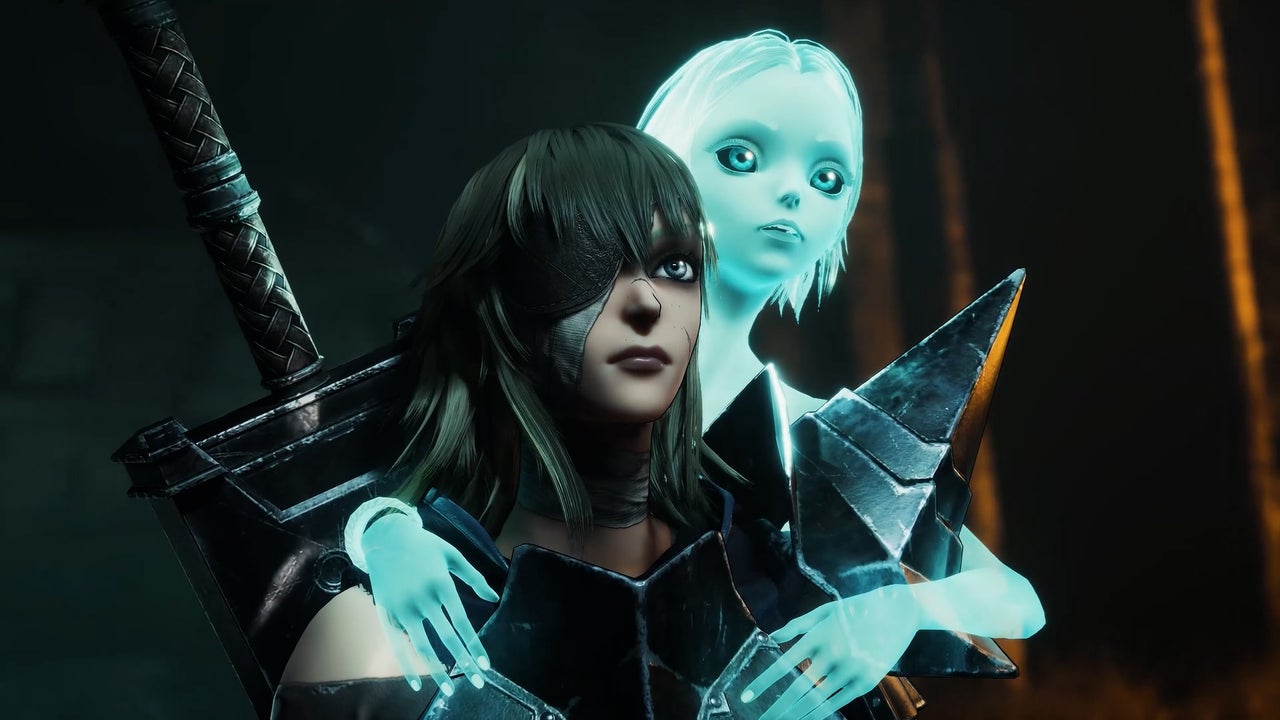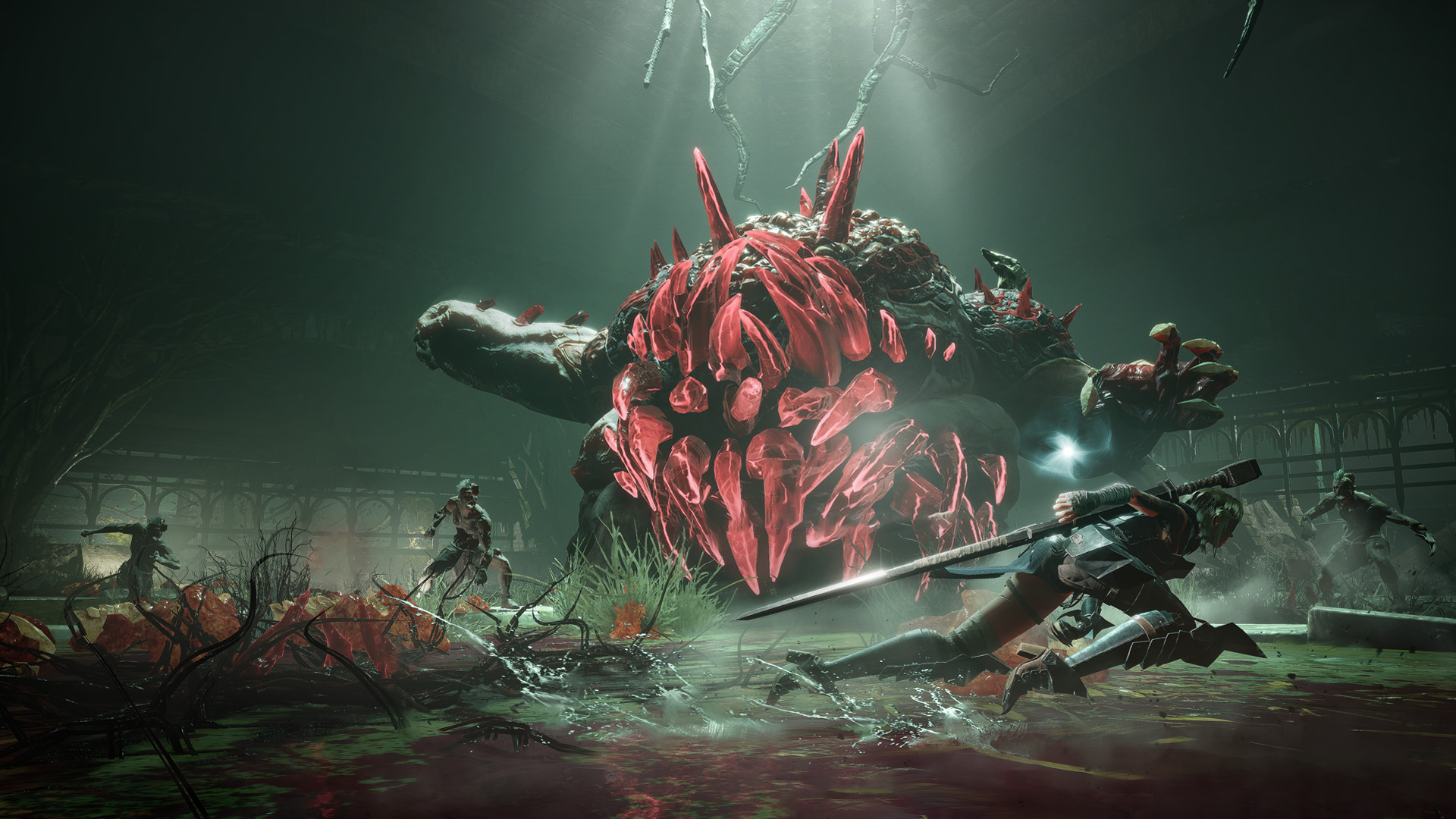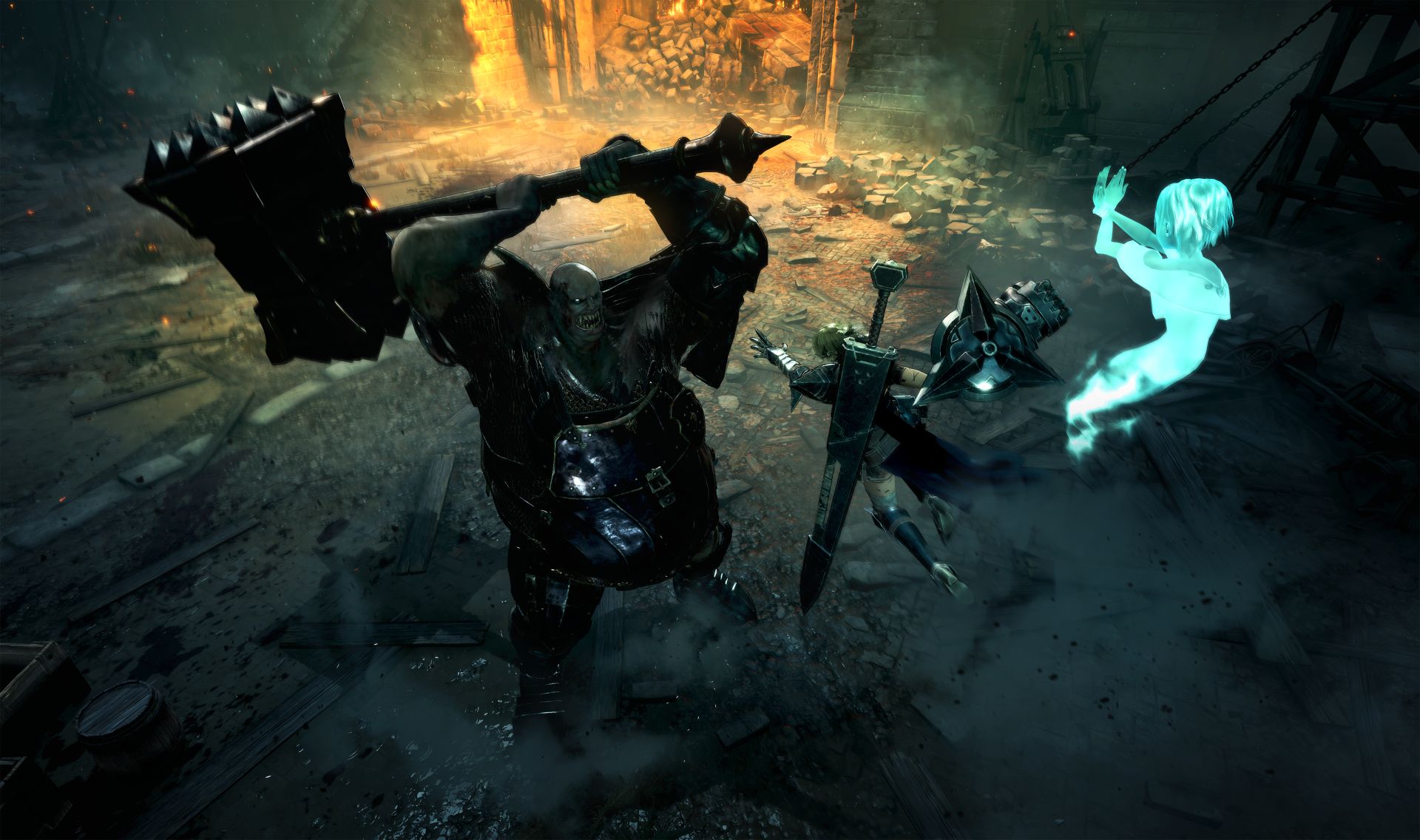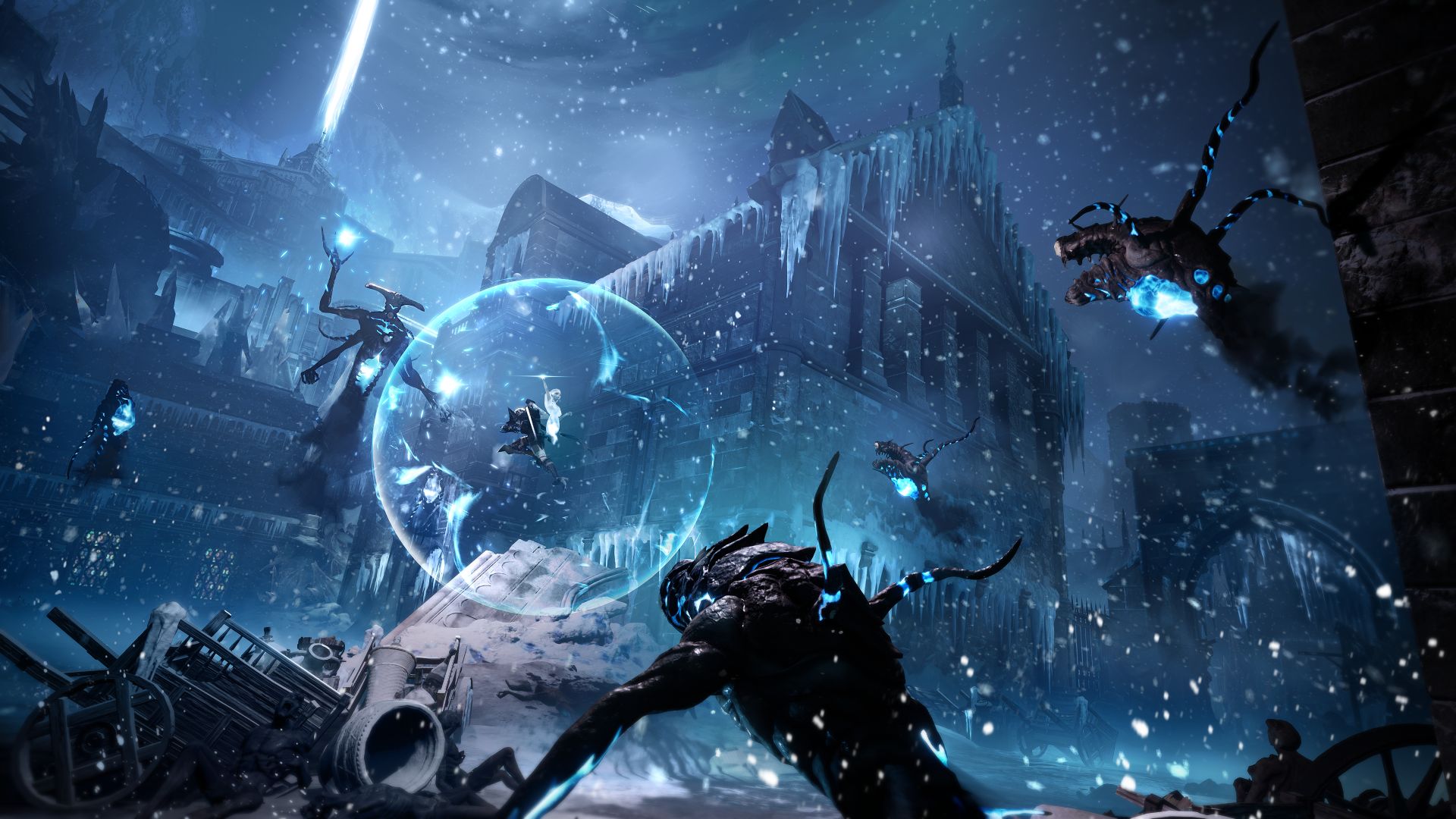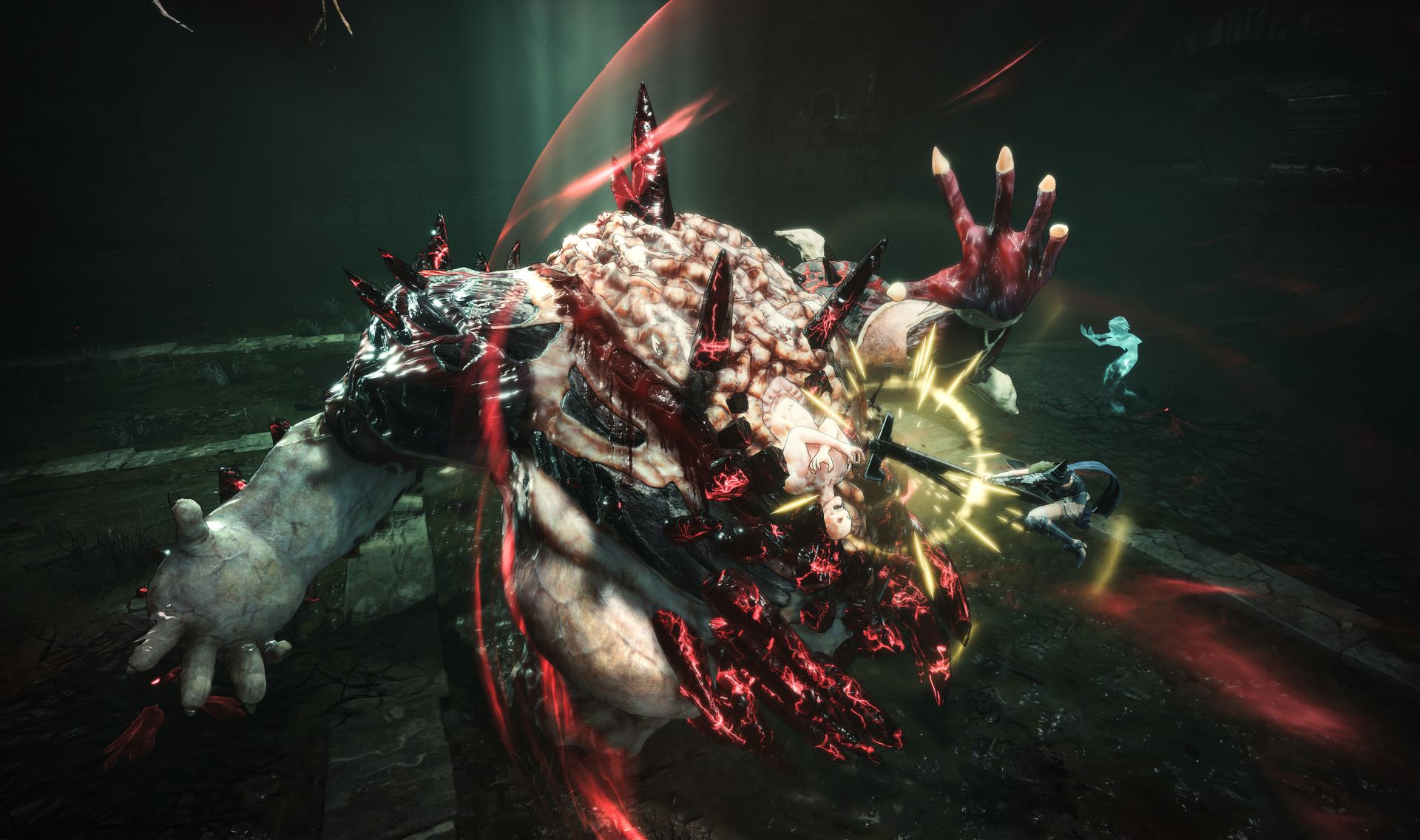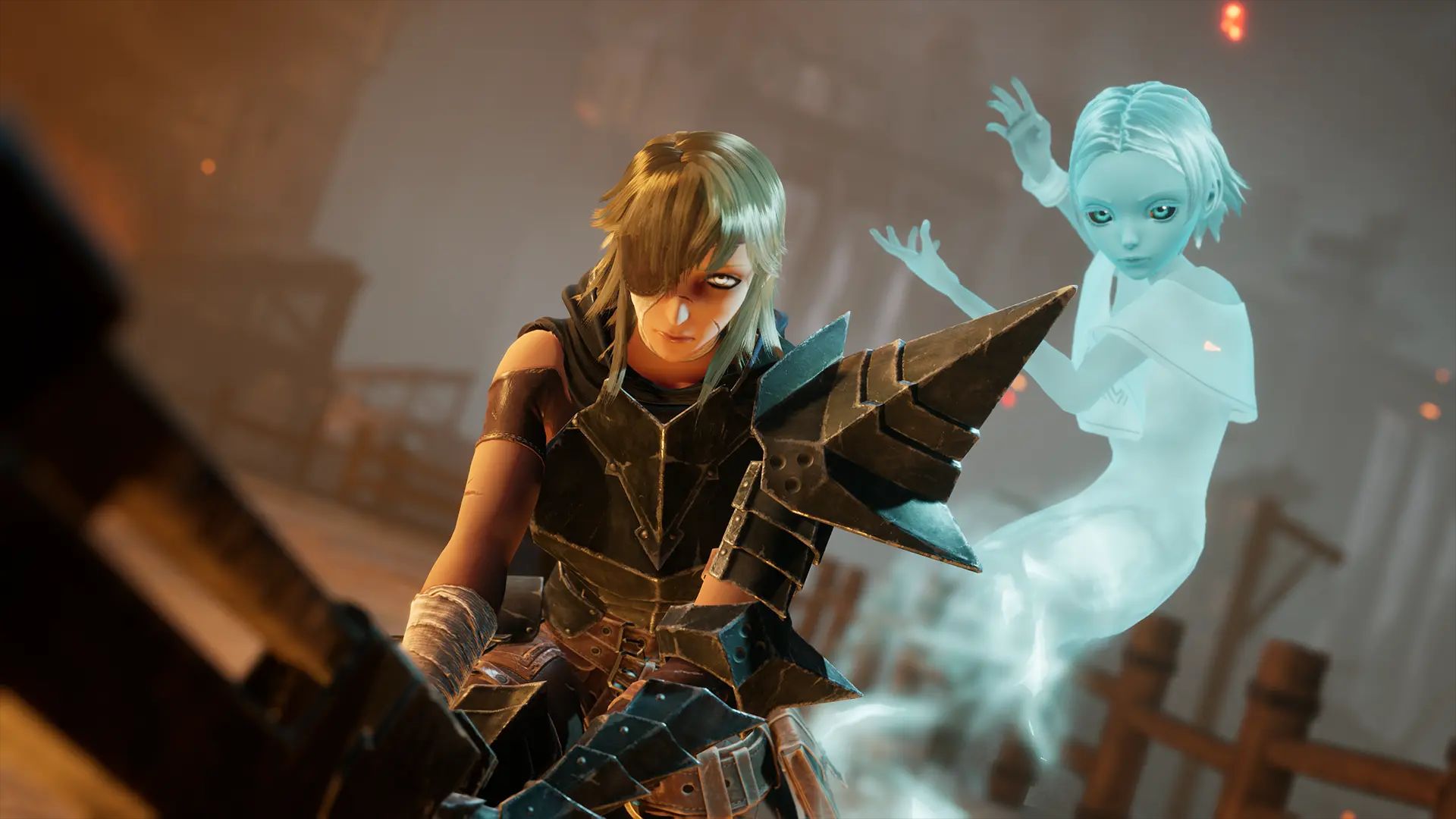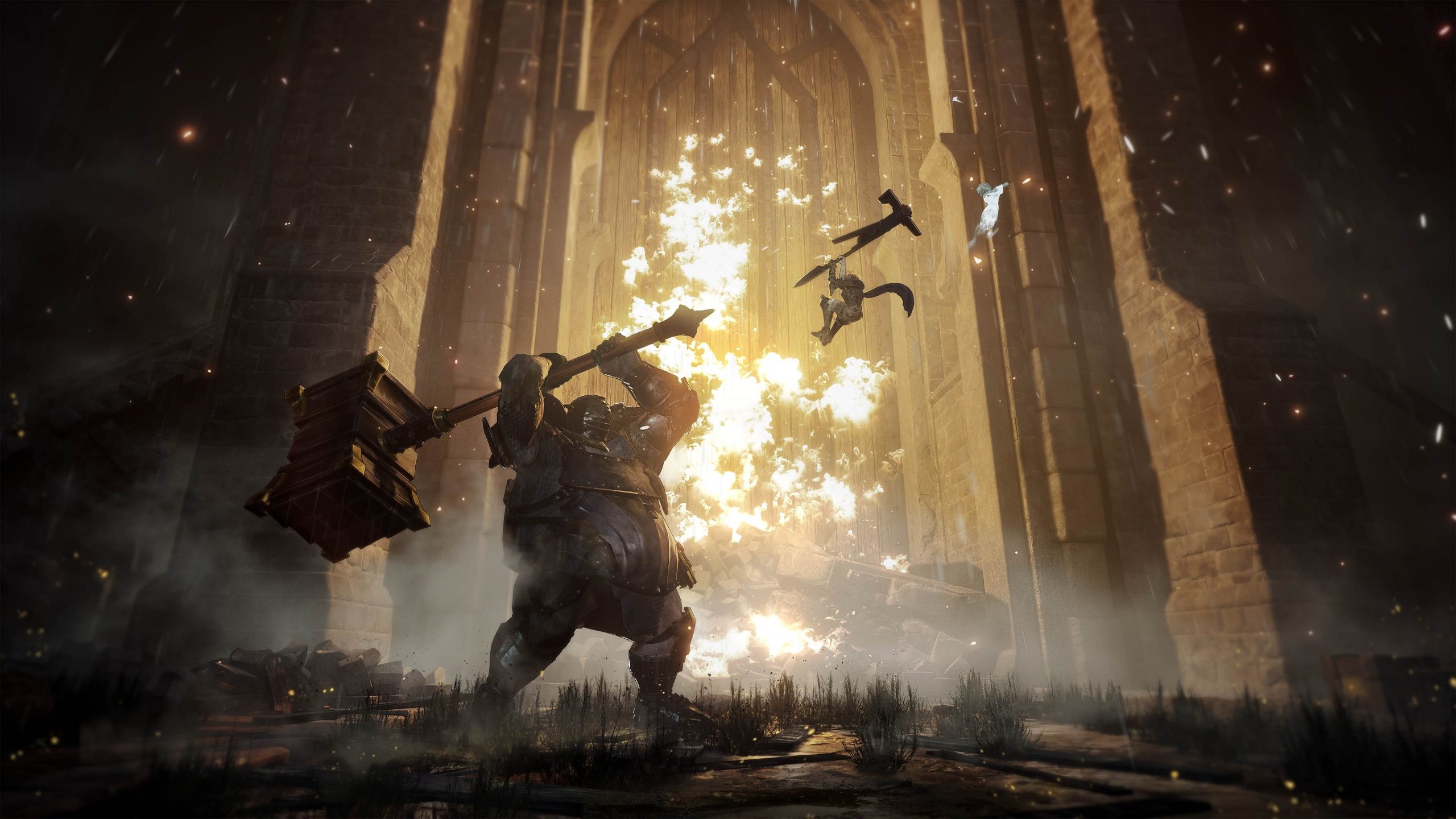
Making waves for its sleek art-style and combat, Reply Game Studios’ Soulstice finally releases on September 20th for Xbox Series X/S, PS5, and PC. Despite launching in a busy month, it offers an intriguing story, deep mechanics and fun exploration to go with its fast-paced combat. I recently had the chance to play a preview build with the first 12 missions available so without further ado, let’s look at 14 things you should know before playing Soulstice.
Story
The story begins with Briar and Lute, sisters who have arrived in the City of Ilden after a terrible disaster. Something – or someone – caused a massive tear in the Veil, resulting in a massive incursion by the Spawn of Chaos. As Chimeras and members of the Order of the Ashen Blade, the two must fight through the hordes of Corrupted, investigate the cause of the tear, and ultimately seal it. Of course, nothing is as simple as it seems, and Echoes of recent events indicate that the Order may have other plans in mind for the fallen kingdom.
Dark Fantasy Setting
As part of the Kingdom of Keidas, Ilden is described as a place where the Torchbearer shines. However, following the tear, it’s a ruined city teeming with horrors. While Soulstice doesn’t go full-on cosmic horror like Bloodborne, it’s still pretty dark, both in subject matter and mood lighting. Lots of dead civilians, gore, and hints of a tragic backstory for the sisters are just a few things to expect.
The environments are also pretty varied, starting out at the ruined docks, transitioning to the streets, through a tower and prison, and so on. Though somewhat linear in the early going, subsequent areas open up a bit more, providing other rooms to explore, secrets to discover and resources to loot. The camera is positioned statically while exploring, changing angles when moving out of frame a la the older Resident Evil titles (and even shifting to a side-scrolling perspective in some platforming sections like NieR: Automata). In combat, the camera can be moved, providing a better sense of the battlefield.
Cast
Players control Briar, who is the standoffish powerhouse of the duo is is struggling to contain the Corruption within her. Perhaps it’s due to how Chimeras are created (not unlike the Youma in manga/anime Claymore), but one thing is for sure – letting it overtake her can result in Lute being lost. As for Lute, she sacrificed her body and bound her soul to her sister as a Shade. Capable of sensing disturbances in the Veil and providing back-up in a myriad of ways, Lute has her own emotional baggage.
Throughout their conversations and random remarks, you’re able to glean more about their dynamic – how much they care for each other, and what events led to their current predicament. There’s also the Observer, Layton, a mysterious figure serving the Order who provides items to buy, and can upgrade abilities for both sisters. Arrogant at times, exasperated at others but mysterious all the while, he also doles out orders and comments on the situation. Other characters pop up during the story, including Donovan, a powerful Chimera who doesn’t use his Shade to fight (for various reasons).
Not a Soulslike
The name may make you think otherwise but just a few seconds of combat should make it obvious – Soulstice isn’t a Souls-like. Its gameplay takes heavy cues from Nier: Automata, though combat is melee-focused. You can chain together light attack and heavy attack combos, and launch enemies into the air. Briar can also dash, both on the ground and in mid-air, while Lute is responsible for disrupting enemies.
The latter can outright repel melee attacks, slow enemies, stop projectiles from reaching her sister, and much more. She can also attack foes with automatic ranged blasts and slashes. You’ll need to carefully time Lute’s disruption abilities though, and things can get fairly chaotic when facing multiple enemies at a time. However, things quickly settle into a nice rhythm and the controls are very smooth throughout.
Unity
As Briar and Lute attack enemies, they start building up Unity, as represented by the icon in the upper right corner. Unity provides multiple benefits, like allowing Lute to fire two additional energy blasts. However, it also lets you unleash Briar’s Synergy Attacks – powerful moves with cinematic angles great for knocking back or outright killing enemies around you. Taking damage or being knocked back causes Unity to decrease, so you’ll have to balance between being aggressive or defensive when the situation calls for it.
Evocation and Banishment Fields
Eventually, you’ll come across Cobalt Veins and Crystal Overgrowths, the former being blue and the latter red. These require Lute to activate an Evocation or Banishment Field to destroy them, though they must remain in the field’s range. Keeping a field active generates Entropy and when the max is reached, Lute will vanish for a short period of time. Things get especially dicey when dealing with blue and red enemies – they can only be damaged when the field of their corresponding color is active.
Of course, you’ll also encounter some platforms and puzzles that require switching between the fields, and they provide a good break to all of the slashing. There are also Motherlodes, large chunks of blue crystals, which must be destroyed with combos and provide Cobalt Tear Residue for unlocking Lute’s abilities. Red crystals also appear throughout, which provide Crimson Residue for buying items from Layton and unlocking new weapon abilities for Briar.
Rapture
At a certain point in the story, Rapture is unlocked. Think of this as your Spartan Rage button, as Briar harnesses the Corrupted power within her to go ballistic on her enemies. Rapture attacks can damage all foes, even those that require an Evocation or Banishment Field. Activating it again unleashes a super-powerful attack to damage remaining enemies, and the overall power showcase is pretty awesome (techno music notwithstanding). The drawback of Rapture is that it decreases Unity significantly, but that’s easy enough to build back up over time.
Weapons
Initially, Briar has access to only two weapons – the Ashen Vindicator, which is a quick striking weapon (ironically so, given its size), and the Ashen Enforcer, a hard-hitting but slower weapon. Eventually, she receives the Hand of Retribution, a powerful gauntlet that can uppercut foes, parry attacks, and so on. Each weapon is effective against different types of foes – the Ashen Enforcer is good against flying enemies while the Hand of Retribution is better at stripping armor. Though the Ashen Vindicator remains equipped at all times, one can switch between their equipped secondary weapons in combat.
Weapon Abilities
Once again, if you’re familiar with NieR: Automata, then a lot of the weapon abilities will look familiar. Along with the Stinger-esque Piercing Lunge for the Ashen Vindicator, you have the Ashen Enforcer’s Arching Onslaught, which is a charged attack for knocking back foes. You can also launch foes with the Enforcer and smash them back down. It’s all fairly straightforward but Synergy Attacks and transitioning into a different weapon ability at the end of a combo provides some variety.
Lute’s Upgrades
But it doesn’t stop there as Lute has her own dedicated skill trees for Offense, Defense, Fields and Rapture. You could unlock the ability to disrupt stronger foes, decrease Entropy when slaying enemies while a field is active, unleash an explosive blast when overcharged, and much more. Best of all, abilities can be respecced if you want to try out different choices.
Enemy Types and Bosses
The Spawn of Chaos are a wily bunch, throwing everything from fodder to powerful Wraiths and Possessed at the sisters, oftentimes in overwhelming numbers. Things start out simply enough with Corrupted humans, though spear-wielding and armored heavy-sword users quickly enter the fray. Eventually, you’ll fight Wraiths, who can only be damaged inside of an Evocation Field. The Possessed require a Banishment Field to deal damage, and include quick-moving Slashers. We won’t spoil any of the boss fights but one of them is a Possessed with multiple different stages and mechanics that are challenging but fun to fight through.
Challenge the Void
Throughout the journey, there will also be special portals that lead to Void Challenges. Each has a unique objective to complete, from executing Perfect Counters or slaying all foes before the timer runs out, and provide rewards upon completion. Void Challenges can be played outside of the main campaign as well, if you fancy a higher score.
Difficulty Options
Soulstice provides five difficulty options – Human, Initiate, Knight, Chimera and Transcended. Human is the easiest and ideal for someone who just wants to enjoy the story while Initiate is a more balanced experience that still provides a decent challenge. Knight is where things get a bit more hairy, while Chimera and Transcended are the two toughest and must be unlocked. Chapter Selection allows for experiencing each difficulty separately (though save data for the current chapter is wiped). Besides a few key mechanics like Rapture, character progression and currency is shared between all difficulties. It’s great for those seeking a tougher challenge to unleash all of their abilities on from the outset.
Accessibility
A wealth of accessibility options are also available, from text size, font style and subtitles background to colorblind modes for Deuteranopia, Protanopia, and Tritanopia. One can also adjust screen shake, toggle gameplay assists like Auto Combat, Auto Fields and Auto Counter, enable the option to pause the game when opening the Inventory, and use only one button press for completing special events and QTEs. It’s a nice set of options to have in addition to rebinding controls.









